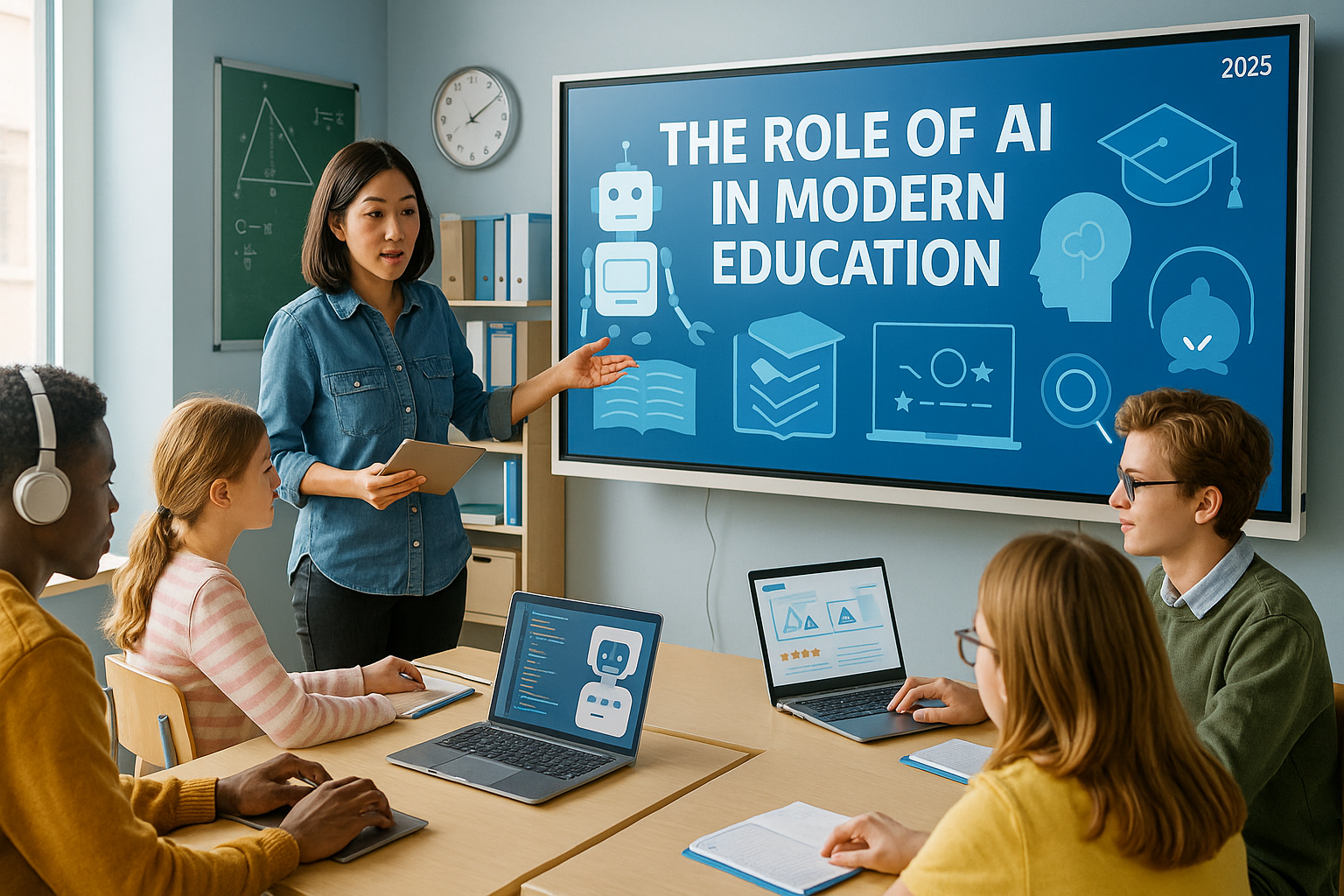Artificial Intelligence (AI) is transforming nearly every sector of modern life — and education is no exception. In 2025, AI has become deeply integrated into the way students learn, teachers teach, and institutions operate. The classroom is no longer limited to four walls or rigid schedules; it’s now a personalized, tech-enhanced space driven by data, algorithms, and adaptive learning.
In this article, we explore how AI is reshaping modern education, from personalized learning pathways to AI-assisted grading, virtual tutors, and even how institutions make strategic decisions.
How AI Is Transforming Learning
1. Personalized Learning at Scale
One of AI’s most impactful contributions to education is personalized learning. In traditional classrooms, it’s nearly impossible for a teacher to customize lessons for each student. AI bridges this gap by:
- Tracking a student’s strengths and weaknesses
- Adapting content difficulty in real-time
- Providing individualized feedback and learning paths
Example: A math app powered by AI might slow down for a student struggling with fractions while accelerating another through algebraic equations.
This ensures that every learner progresses at their own pace, resulting in better outcomes and higher engagement.
2. AI Tutors and Virtual Assistants
In 2025, students don’t have to wait for office hours or classroom sessions to get help. AI-powered virtual tutors are available 24/7 to:
- Answer questions in real-time
- Clarify complex concepts
- Provide additional practice exercises
These assistants are multilingual, culturally aware, and continually updated with the latest curricula. They can mimic human-like responses using advanced natural language processing.
3. Automated Grading and Feedback
Teachers spend a significant amount of time grading — especially for large classes. AI now helps by:
- Automatically grading multiple-choice, fill-in-the-blank, and even short-form answers
- Providing real-time feedback to students
- Highlighting trends in student performance
This not only saves time but also allows educators to focus on more strategic and creative teaching tasks.
4. Data-Driven Insights for Educators
AI tools help schools and universities analyze large volumes of data to understand:
- Student attendance and participation patterns
- Early signs of academic struggles
- Overall performance trends by course or demographic
This enables institutions to make informed decisions about curriculum development, resource allocation, and student support programs.
Revolutionizing the Classroom Experience
5. Smart Content and Interactive Learning
AI generates dynamic content tailored to various learning styles, including:
- Gamified exercises
- Interactive simulations
- Augmented and virtual reality modules
Example: A history lesson on ancient Rome can be transformed into a VR walkthrough of the Colosseum, offering an immersive experience far beyond textbooks.
6. Language Learning and Translation
AI-powered tools now help students learn new languages more efficiently by:
- Providing real-time pronunciation feedback
- Offering grammar correction and translation
- Simulating real-world conversation scenarios
For multilingual classrooms, AI also offers live translation, breaking down communication barriers and making education more inclusive.
7. Accessibility and Inclusion
AI is a game changer for students with disabilities. Tools like:
- Text-to-speech and speech-to-text
- Real-time sign language interpretation
- Visual recognition for the visually impaired
make education accessible to all, regardless of physical or cognitive challenges.
How Institutions Benefit from AI
8. Admissions and Enrollment
AI streamlines the admissions process by:
- Scanning applications efficiently
- Predicting student success based on data
- Recommending courses and career paths based on academic history and interest
This reduces bias and speeds up decision-making.
9. AI in Educational Management
From course planning to budgeting, AI systems help administrators:
- Optimize class schedules
- Allocate resources effectively
- Monitor faculty performance and student outcomes
This creates a more efficient and accountable education system.
10. Continuous Learning and Upskilling
In an era of lifelong learning, AI plays a crucial role in professional development. It helps:
- Curate learning paths based on job market trends
- Recommend upskilling opportunities
- Deliver microlearning modules on demand
This is particularly useful in corporate and adult education settings.
Ethical and Privacy Considerations
AI in education brings immense potential but also significant challenges:
- Data Privacy: Students’ performance and behavior data must be handled responsibly and in compliance with laws like FERPA and GDPR.
- Bias and Fairness: AI models must be trained on diverse data sets to avoid reinforcing social or cultural biases.
- Transparency: Students and educators should understand how AI makes decisions, especially when it comes to grading or recommending content.
Regulators and institutions must ensure that AI is used ethically and does not replace the human connection essential to education.
The Future of Education with AI
Looking ahead, AI will become more deeply embedded in all aspects of education:
- Lifelong learning companions that evolve with users over decades
- Emotionally intelligent AI that adjusts tone based on student sentiment
- Global classrooms where students from different countries learn together in real time with automatic translation
The goal isn’t to replace educators — it’s to empower them and enhance the learning journey for every student.
